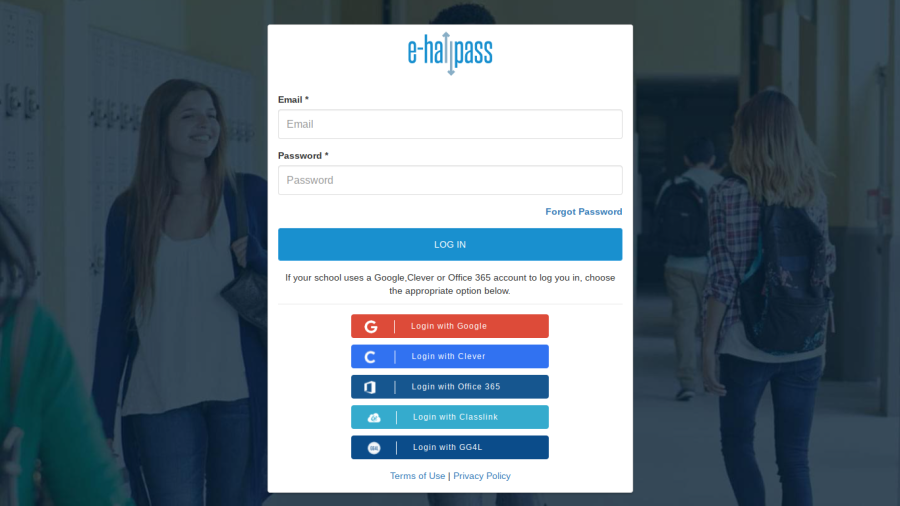Planned implementation of new “E-hallpass” leaves mixed reactions
The planned release of the new “E-hallpass” system left many students angered while administration plans to use the system to lower the amount of bad behavior within the school.
On Friday, April 8, a memo was sent out via email regarding the implementation of a new hall pass system that would begin the following Monday, April 11. In the memo, principal Melissa Barlow outlined the system and provided a link to a video that displays an overview of the system.
The new system, “e-hallpass,” is completely digital and is run by the online software company known as Eduspire Solutions. It allows students to state the specific bathroom they plan to enter, and puts a timer on the trip to ensure they are not outside of the classroom for an extended period of time. To leave the classroom, the student and teacher must both enter a code via their device, thus allowing teachers to be certain of which students are not in the classroom. The system is designed to be contactless, allow for less hallway traffic, increase building safety and limit mischief. Along with these benefits, Barlow explains the new structure will help inside the classroom.
“E-hallpass really gives kids an accountability piece to make sure that they’re staying in class as much possible so they’re not missing out on class time,” Barlow said. “Now that we’re back to normal, that instruction time is really, really important.”
After the initial memo was sent out, the launch of the system was ultimately delayed. A move was made to review the change.
“We’re looking and re-assessing all of the different aspects of it, so we’re just taking a little bit of time before we decide if we’re going to continue with that trial,” Barlow said. “Initially, we were going to try it out for the rest of this school year so we are just trying to figure out if we are going to do that trial or if we are just going to jump right in next school year.”
The planned transition was met with some criticism, with some thinking it wastes too much time.
“I think the new system is pretty dumb,” sophomore Shelby Cole said. “You are taking time out of the teacher’s day for us to literally just go to the bathroom and come back. It takes maybe 10 minutes out of a teacher’s time to teach a class, it is not a part of their job to have to potty train someone.”
While some students dislike the change, other students understand the goal of the transition to a new process.
“I think it’s a decent idea for what they are trying to accomplish,” sophomore Logan Hursh said. “It shouldn’t impact me as long there is not a large number of students out at once that prevent me from being able to go.”
Barlow understands that some of the reaction is negative, but details those upset are largely the ones the system was intended for.
“Kids don’t like it,” Barlow said. “But here’s what’s crazy. The kids that don’t care about it are the kids that are in class and doing what they are supposed to. The kids that seem to be reacting to it are the kids that are missing extensive amounts of class time, they’re engaging in activities that they shouldn’t be engaging in the bathroom or the hallways.”
With mixed reactions among students, teachers are also adjusting to the switch. While it may be a longer overall process, it can have its benefits.
“It’s a good tracking system because there are too many kids that are doing the wrong thing out in the hallway and it’s a way to crack down on that as long as students and teachers buy-in,” biology teacher Erin Regier said. “But we don’t know how it’s going to work, so is it going to take away time for me giving instructions or helping students? Until it’s in place, we don’t know.”

Coy Pope has been a staff writer for the YHS insight since 2019. He loves writing about all things sports, but also covers all sorts of other topics. Before...



